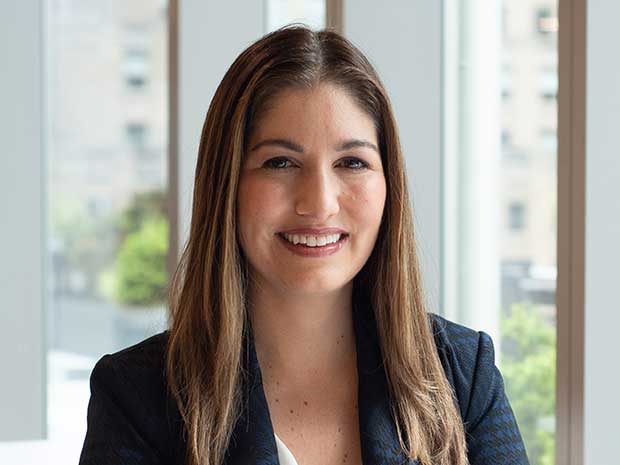Market shifts since 2020 have broadened investing opportunities well beyond the wealthiest.
High Contrast
Key takeaways
Asset managers, exchanges and broker-dealers are targeting individual retail investors more.
Organizations offering these complex products must ensure that investors fully understand them.
The current macroeconomic environment, paired with changing investor preferences, is creating new opportunities for all stakeholders in the investment world. Asset managers, exchanges and broker-dealers are increasingly launching innovative products targeted not only at traditional institutional investors but also at individual retail investors.
Retail investment accelerated over the past few years due to the pandemic as more people got involved in the markets amid a proliferation in personal investing technology. This trend, paired with challenges in the private markets, has created an opportunity to structure investment products that will attract wealthy individual investors.
For investors, these innovative products, such as retail private equity funds and exchange-traded funds (ETFs) focused on digital wallets, can help meet their changing expectations and growing demand for diversification. For fund managers, such products help penetrate untapped capital pools, expanding their addressable market.
But organizations offering these complicated products must ensure that investors fully understand them.
Opportunities in private wealth
The United States has the largest wealth market in the world. The concentration of wealth in the hands of the richest 1% of Americans grew by 4 percentage points, nearly quadrupling in value, from 2002 to 2022, according to data aggregated by the U.S. Federal Reserve System and the World Inequality Database.
The wealthiest 10% of Americans invest mostly in public equities, mutual funds and real estate. This leaves room for growth in other investments such as alternative assets, especially as the appetite for alternatives increases across all investor types. As of the end of Q2 2023, global alternative assets under management stood at $13.4 trillion; that figure is forecast to reach $26.5 trillion by 2028, according to Preqin. Naturally, some of this growth will be fueled by the opportunity in the wealth market.
Changing investor preferences and receding barriers
Market shifts since 2020 have broadened investing opportunities well beyond the wealthiest. When the pandemic forced global shutdowns, retail investors became more comfortable in general with investing, using app-based platforms from the comfort of their own homes. The increased convenience of interacting with the markets, along with additional downtime, increased their market participation. Peak daily retail flows grew from $820 million in 2019 to $1.29 billion in 2020, according to Vanda Research, which provides and tracks daily trade activity, and continued to increase in 2023, reaching $1.51 billion.
Another factor driving individual investing was the U.S. Securities and Exchange Commission’s expansion of the definition of “accredited investor” in 2020. Prior to the change, the definition was quantitative, requiring investors to meet certain income and net worth thresholds. The changes to the definition included qualitative thresholds based on professional knowledge, experience or certifications. This allowed individuals without deep pockets to participate in more sophisticated investment choices. The alternatives market wasn't entirely closed off to individual investors pre-2020, but entry had mostly been limited to the ultrawealthy.
Fast-forward to today, and retail investors are increasingly interested in more advanced products such as derivatives, cryptocurrencies and private investments as they seek to further diversify their holdings and increase returns. The availability of more complex products in both the public and private markets is increasing with the growing demand.
Public market innovation
Retail investors are becoming more curious about derivatives, such as options, due to their flexibility and hedging capabilities. Robinhood, a popular platform for retail investors, plans to offer options products in Q4 2024 and will likely expand into futures products in the near future.
But it’s more than curiosity from retail investors fueling the interest in derivatives; the Financial Industry Regulatory Authority recently adjusted margin relief rules, which will make it easier for customers to exercise index options. Those options allow investors to overwrite long ETF positions that track the same index with cash settlements rather than underlying shares of the ETF. Through the revised margin relief rule, index options are now protected for margining purposes and are not subject to uncovered margin requirements. This frees up capital for investors to allocate to other market opportunities, allowing for further market interaction and product diversification.
The adjustment in margin requirements, the ease of liquidation and the convenience of cash settlement should further increase investor demand for both ETFs and derivatives. ETFs are already on the rise, with the number of launches per year in the United States increasing by approximately five times from 2013 to 2023, according to Bloomberg.
Though actively managed ETFs will continue to grow, issuers will need to continue to diversify their product offerings to remain competitive due to the saturation of ETF products and tough competition. Currently, 66% of ETFs are equity-based. To remain competitive and sustain revenue growth, institutions must further diversify ETF products and offer more niche, high-fee ETF offerings to both retail and institutional investors. We anticipate more issuers will integrate options into ETF strategies in the near future, which will allow for further risk mitigation, volatility reduction and yield enhancements for retail and institutional investors alike. Institutions may also opt to offer more niche products, such as digital asset-based ETFs or artificial intelligence-based ETFs.
Private market innovation
In the private sector, many of the largest alternative asset managers are capitalizing on this growing customer demand by launching funds and products that provide wealthy individuals access to various alternative asset classes. To date, the largest fund managers have been leading this charge, enabled by access to more resources compared to their smaller peers. Traditionally, these large managers were focused on raising capital from a smaller group of institutional investors. Now, they are allocating more resources to building their distribution and marketing channels to expand into the retail market, typically via partnerships with existing advisors and banks or acquisitions of companies with existing capabilities.
Products launched in recent years include tokenized fund structures, retail infrastructure funds and retail private credit funds. Some organizations are even partnering to launch these products jointly, tailoring them to the retail market.
Factors to consider
With a new and growing retail investor market, the organizations providing these products should ensure that their target investors have all the information they need to fully understand the offerings. The educational component will be crucial to managing the potential impact of these products on the overall health of the financial markets.
Areas where organizations may want to focus educational efforts include, but are not limited to:
- Liquidity limitations
- Valuation complexity
- Regulatory environment
- Risk profile
- Fee structures
- Tax implications
- Alternative investments’ correlation with public markets
Despite the hurdles ahead, retail investors will continue to be an important source of capital for organizations launching these innovative products in both the public and private markets.



